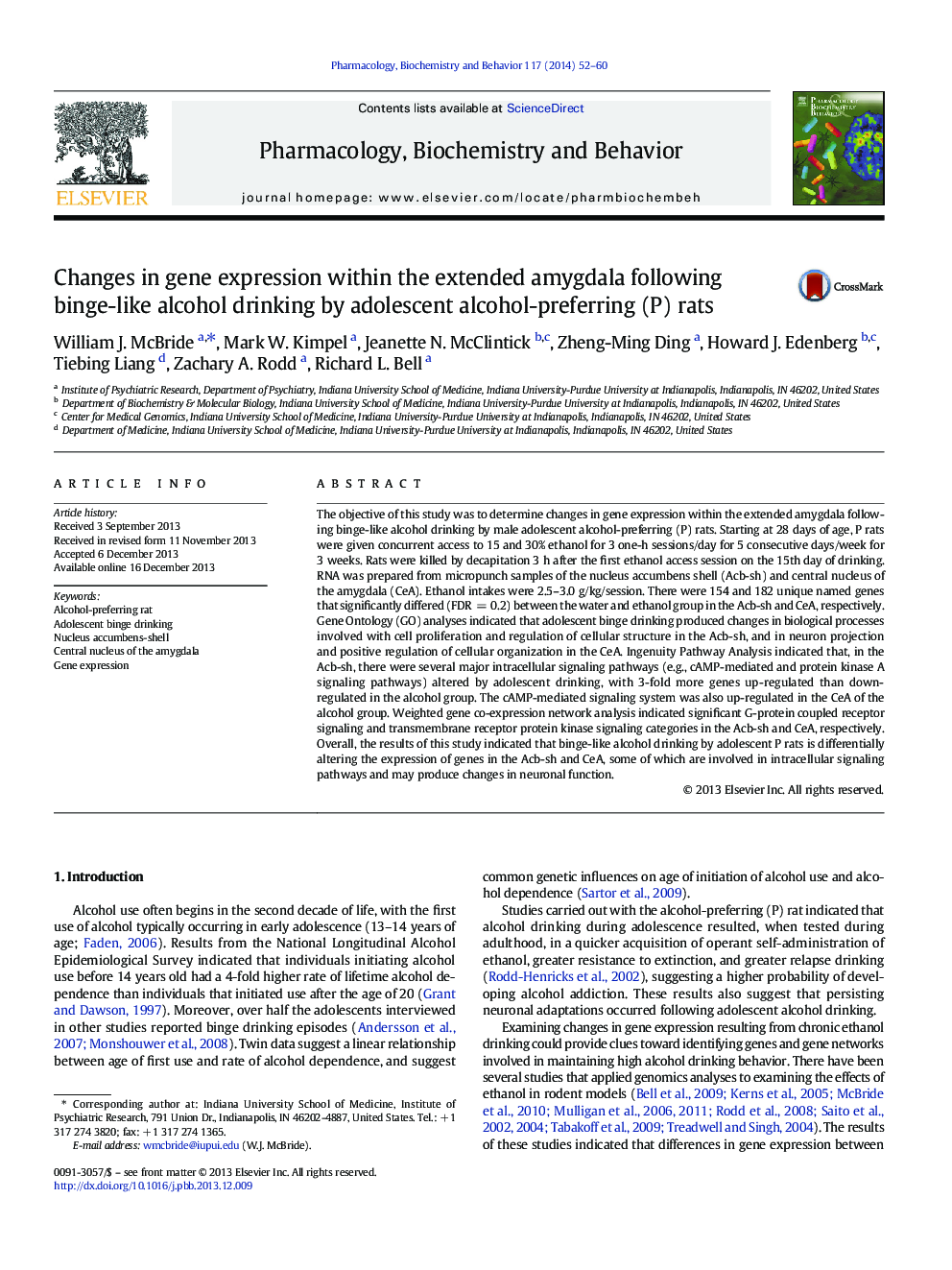| Article ID | Journal | Published Year | Pages | File Type |
|---|---|---|---|---|
| 8351443 | Pharmacology Biochemistry and Behavior | 2014 | 9 Pages |
Abstract
The objective of this study was to determine changes in gene expression within the extended amygdala following binge-like alcohol drinking by male adolescent alcohol-preferring (P) rats. Starting at 28Â days of age, P rats were given concurrent access to 15 and 30% ethanol for 3 one-h sessions/day for 5 consecutive days/week for 3Â weeks. Rats were killed by decapitation 3Â h after the first ethanol access session on the 15th day of drinking. RNA was prepared from micropunch samples of the nucleus accumbens shell (Acb-sh) and central nucleus of the amygdala (CeA). Ethanol intakes were 2.5-3.0Â g/kg/session. There were 154 and 182 unique named genes that significantly differed (FDRÂ =Â 0.2) between the water and ethanol group in the Acb-sh and CeA, respectively. Gene Ontology (GO) analyses indicated that adolescent binge drinking produced changes in biological processes involved with cell proliferation and regulation of cellular structure in the Acb-sh, and in neuron projection and positive regulation of cellular organization in the CeA. Ingenuity Pathway Analysis indicated that, in the Acb-sh, there were several major intracellular signaling pathways (e.g., cAMP-mediated and protein kinase A signaling pathways) altered by adolescent drinking, with 3-fold more genes up-regulated than down-regulated in the alcohol group. The cAMP-mediated signaling system was also up-regulated in the CeA of the alcohol group. Weighted gene co-expression network analysis indicated significant G-protein coupled receptor signaling and transmembrane receptor protein kinase signaling categories in the Acb-sh and CeA, respectively. Overall, the results of this study indicated that binge-like alcohol drinking by adolescent P rats is differentially altering the expression of genes in the Acb-sh and CeA, some of which are involved in intracellular signaling pathways and may produce changes in neuronal function.
Related Topics
Life Sciences
Biochemistry, Genetics and Molecular Biology
Biochemistry
Authors
William J. McBride, Mark W. Kimpel, Jeanette N. McClintick, Zheng-Ming Ding, Howard J. Edenberg, Tiebing Liang, Zachary A. Rodd, Richard L. Bell,
